The Difference Between Convergent and Divergent Thinking
This post may contain affiliate links.
Do you know the difference between convergent and divergent thinking?
A lack of divergent thinking opportunities for our children inhibits creativity and the ability to problem-solve so I want to define terms as well as give you examples of both.
The Difference Between Divergent and Convergent Thinking
Convergent Thinking
(Stickman)

Linear
Convergent Thinking
Worksheet-Heavy
Early Academic Push
Skill & Drill
Right Answers
Often the media or politicians prey on our deepest fears and dreams for our children, pushing the message that if we don’t prioritize academics, our kids will be “behind.”
Indeed after quarantine, this is more true than ever. And yes, kids are falling behind academically due to the pandemic circumstances.
However, I believe we must be very clear as we move forward that we don’t push convergent learning only. This does not get the kind of learners that we want. Knowing facts does not translate into being able to problem-solve or be creative.
Fact-based, linear learning is one kind of learning. It’s based on a convergent thinking model.
Convergent thinking is learning facts, following instructions, and solving problems with ONE right answer.
Certainly, this kind of learning has its place. Math is an example of convergent thinking. Standardized tests are convergent; so is an IQ test.
Except, most children do not learn best in a “tell and show” method (aka. a teacher tells them what to learn and kids demonstrate that they’ve learned it.)
Yes, kids will learn something, but they won’t become thinkers, learners, and creative problem solvers. (Ritchhart, R., Church, M., Morrison, K. Making Thinking Visible (2011))
Example: A friend’s 5-year old son, David, took the IQ test and did poorly; he wasn’t a convergent thinker. He got this question wrong: What color is a banana? The “right” answer was yellow. David answered white and got the question wrong.
Like a two-dimensional stick figure, or what I’m calling the Way of the Stickman, is when children start ignoring the possible answers in favor of one “right” answer.
In Making Thinking Visible, the authors call this surface learning. They add, “When a worksheet is being filled out, the amount of interaction is reduced and the focus becomes doing the work rather than the learning.”
Possible End Results:
passivity towards learning
poor problem solvers (Michnik Golinkoff, R., Hirsh-Pasek, K., Eyer, D. Einstein Never Used Flashcards, 2004)
inability to think (Kamii, 1984)
behavior problems (Semrud-Clikeman, Margaret)
learning disabilities (Healy, Jane. Different Learners, 2010) in the context of forced academics too young
A revealing study about creativity from Land and Jarman’s book Breakpoint and Beyond elaborates this. Also, Sir Ken Robinson cited in this study in a speech. The study showed how children at age five start their schooling as geniuses in creativity, problem-solving, and divergent thinking (the opposite of convergent thinking) but lose this natural giftedness with each year in school. Each year they become more linear, like stickmen.
Here’s an example of a linear learning activity that my kindergartener brought home. Guess what? EVERYONE’s “art” looked exactly the same.

It’s a convergent assignment because the shapes had to go exactly where the teacher said and there was ONE right answer.
*It could have been divergent if the teacher had allowed the learner to put the shapes anywhere. Now that would have been cool!
Here’s another convergent activity.
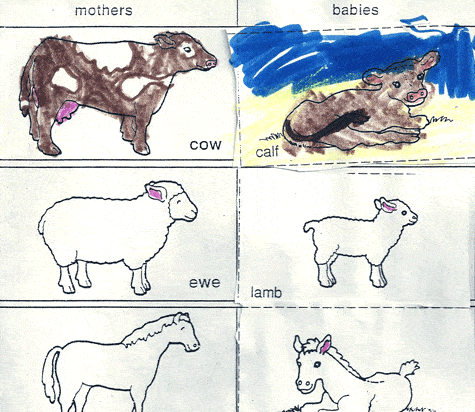
Divergent Thinking
(Chimera)
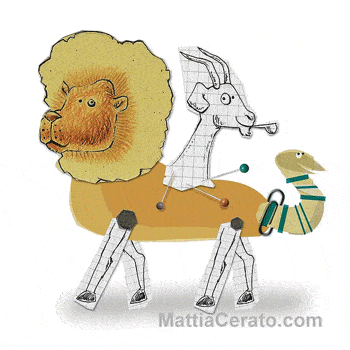
Constructivist Approach
Divergent Thinking
Collaboration
Projects
In contrast to linear thinking, divergent thinking is generating unique solutions and seeing various possibilities in response to questions and problems. (Watch Sir Ken Robinson’s speech on Changing Education Paradigms.)
Often people call this “thinking outside the box”.
Doesn’t a chimera remind you of this way of seeing possibilities?
Creativity and divergent thinking are interrelated — you must be able to think divergently to be creative.
If you want to apply this to education, children become creative thinkers when they’re in learning environments that use a constructivist approach.
Constructivist learning happens when kids construct their own learning by building on background knowledge, experience, and reflecting on those experiences.
Highly-skilled teachers (or homeschool parents) facilitate the child’s learning knowing exactly what the child knows and what learning comes next for him or her. Lev Vygotsky says the learner becomes “a head taller” when the teacher “scaffolds” learning.
-
-
- In Making Thinking Visible, the authors explain that teachers are not delivering curriculum to a passive group of students but actively engaging students with ideas then guiding their thinking about those ideas. They call it deep learning.
- “Learners are given the freedom to think, to question, to reflect, and to interact with ideas, objects, and others—in other words, to construct meaning.” Brooks and Brooks.
- The highest-level executive thinking, making of connections, and “aha” moments are more likely to occur in an atmosphere of “exuberant discovery,” where students of all ages retain that kindergarten enthusiasm of embracing each day with the joy of learning. Willis, Judy Research-Based Strategies to Ignite Student Learning: Insights from a Neurologist and Classroom Teacher (ASCD, 2006)
- In Anne Flemmert Jensen’s paper, What do Children Need to Learn to Become Powerful Players in the World of Tomorrow?, for LEGO Education, she writes “children enrolled in preschools based on constructivist approaches do better in school in the long run (Miller & Bizzell, 1983; Marcon, 1992).” Loads of research support this finding. (See the entire bibliography in Einstein Never Used Flashcards.)
-
You’re seeing the difference now, right?
Here’s an example of a divergent learning activity:
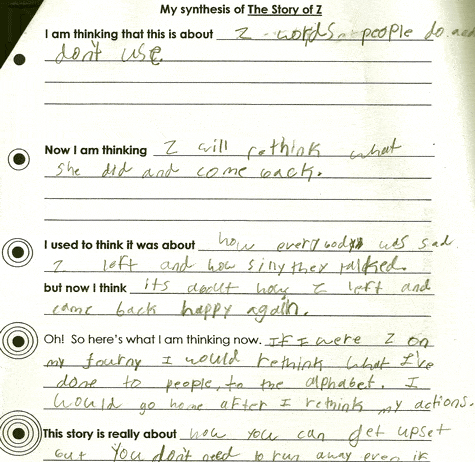
The worksheet asks kids to think and reflect and change their thinking WITHOUT HAVING ANY RIGHT ANSWERS.
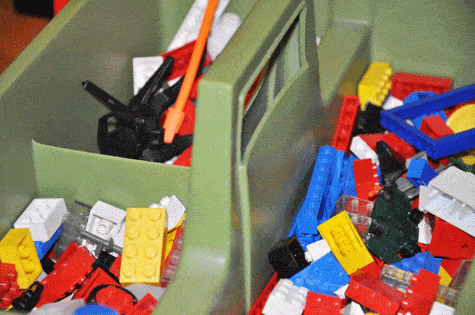
Legos without any directions are another example of an opportunity for divergent thinking.
The prompts on the Think blog also will get kids creatively problem-solving.
The Importance of a Both Convergent and Divergent Learning Approach
But, before you run off and demand an end to all convergent learning and thinking, don’t.
We actually need both convergent and divergent thinking.
“Creativity requires constant shifting, blender pulses of both divergent thinking and convergent thinking, to combine new information with old and forgotten ideas. Highly creative people are very good at marshaling their brains into bilateral mode, and the more creative they are, the more they dual-activate.” – The Creativity Crisis by Po Bronson and Ashley Merryman
The goal is MORE divergent thinking and LESS convergent thinking.
Comment below with your questions or goals!
–> Quiz yourself – can you spot which activities are divergent and which are convergent?
–> READ: Teach kids to think about their own thinking (metacognition)
Updated 2/1/22
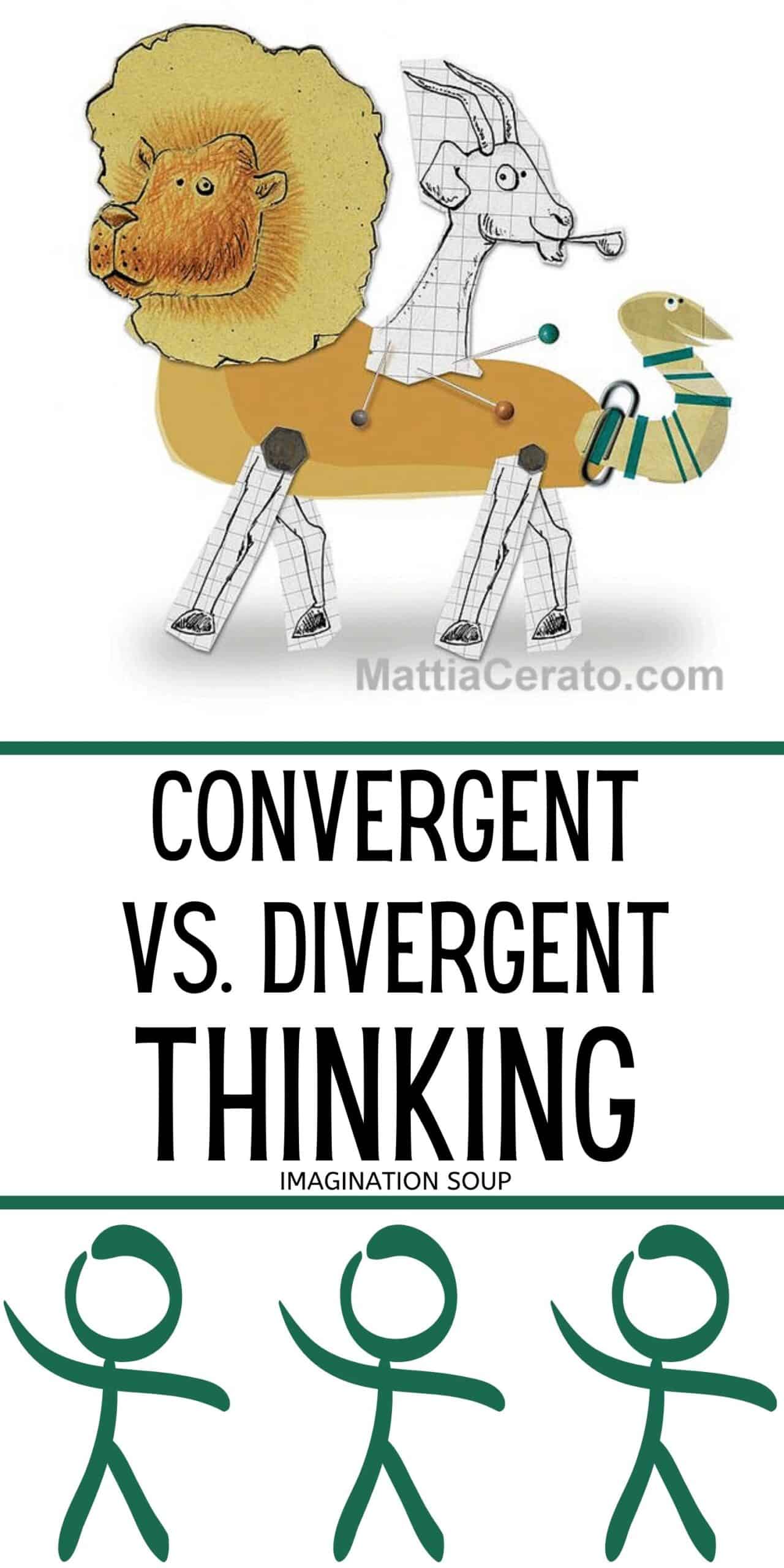

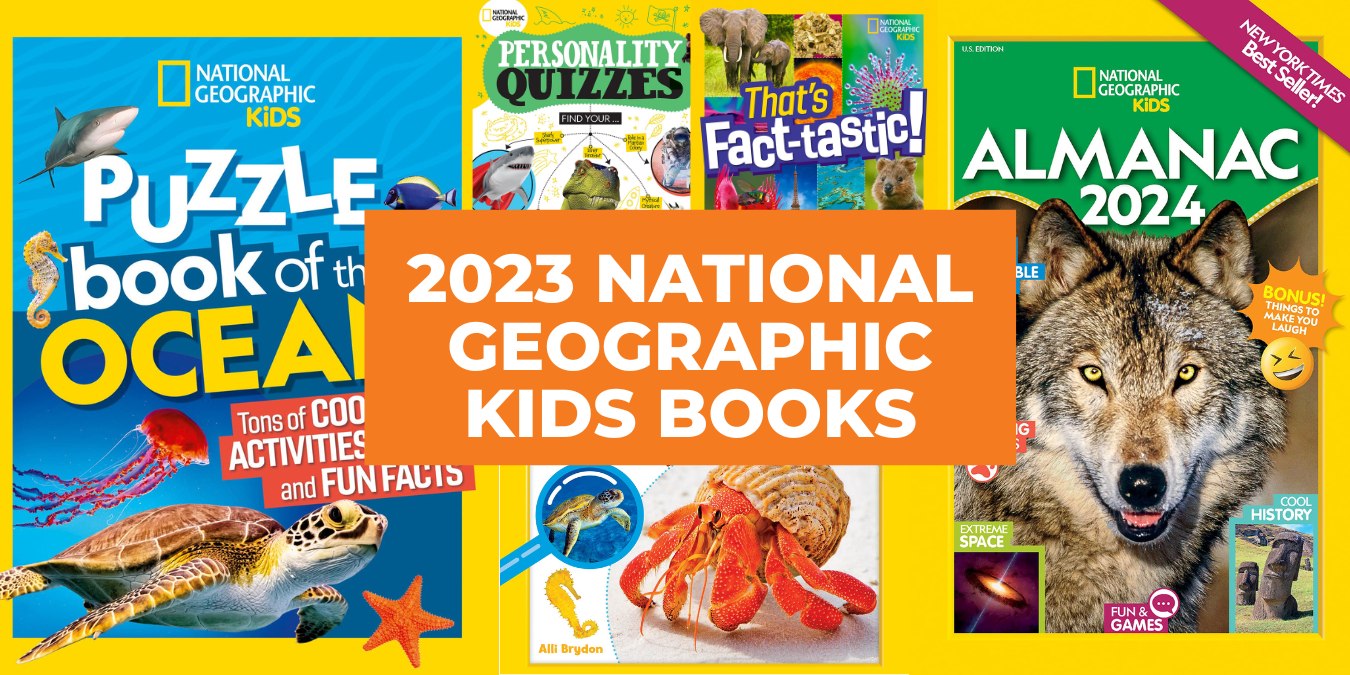
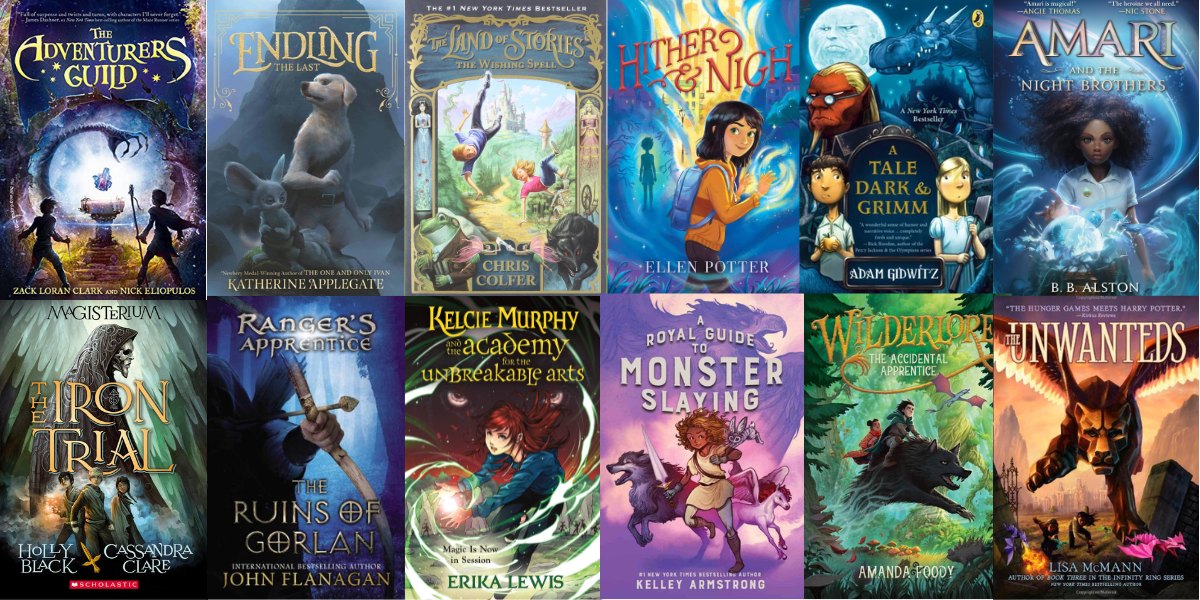


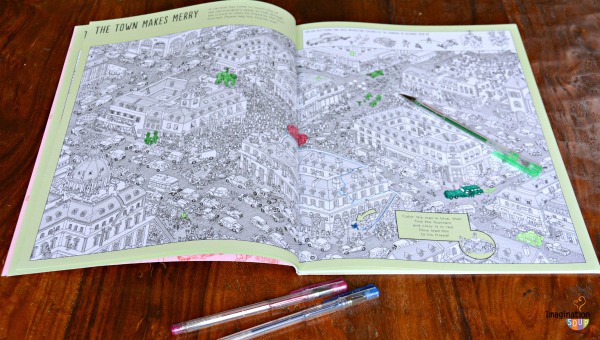
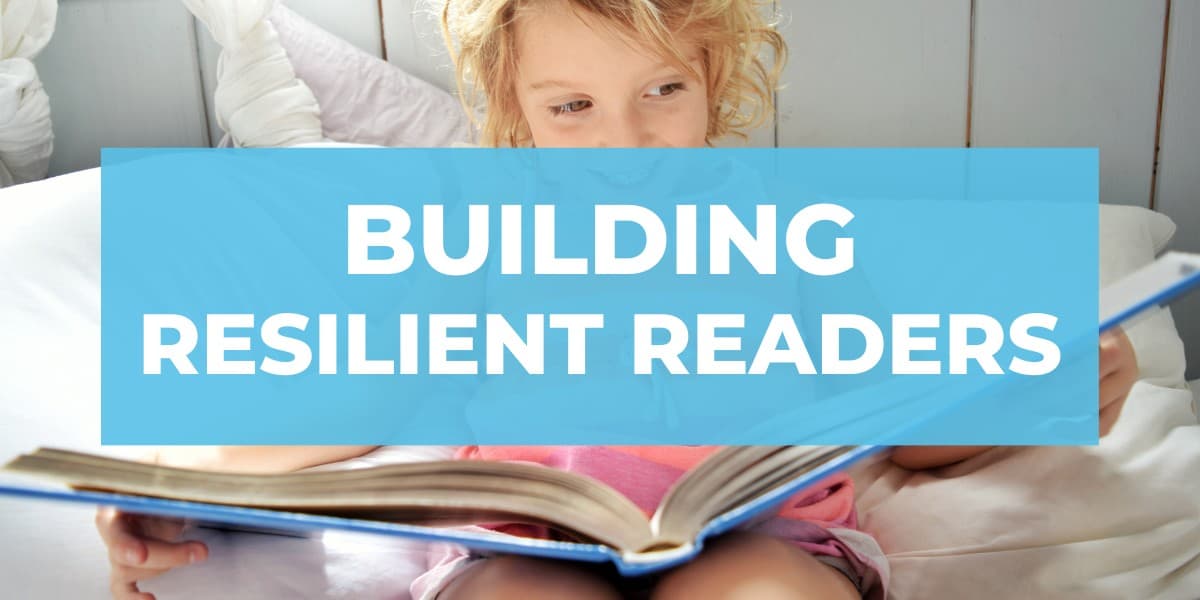
I see the increasing trend towards linear or convergent thinking in the recent debut by Lego of Lego Friends for Girls and the emphasis on one-solution kits. Not much gray area here. You are either pink or blue. You either complete the model in the diagram or you fail. Model making, or following directions, is interesting to many children, especially at a certain age. However, the increasing trend to market Lego (and other construction sets) as object specific kits or as gender specific toys rather than as an open-ended building sets is based mainly on the need for increased profits, not on what is best for the development for all children.
did you sneak a peek at my post tomorrow? I use the Lego kits as an example – it’s almost impossible to get a box of Legos not in a kit! I checked at their store and they had 2 small boxes. Pathetic. And, I asked for something from their school / educational division – they said it was all online and you had to prove you were a teacher. Really? How is that in the best interests of kids?
The Lego Girls series is going to be the same way as all the sets in the stores. My boys have legos and Trios… they make the “design” once then once that gets broke down the pieces get incorporated into the herd and they start making creative things with them. From what I’ve seen the Lego Friends won’t even have the flexibility to create new things, it’s essentially a doll house in legos.
I love this article and will be sharing this series with my staff. My hope is that all the preschool teachers can start to push up the convergent thinking and reverse some of the push down academics.
This is great, and provides some words and explanations for concepts that have been in my head for a long time. My overall disdain for, and concern with, the style of public education led to me searching out alternative options for schooling, because I didn’t want my bright, sensitive, creative son forced to lose his lateral thinking and problem solving approach to life. He starts at a Steiner Waldorf school this year.
One of the best statements I’ve heard to come out of that style of education is the school principal saying: “I was at a conference for educators, and there was a lot of debate about school curriculum. Someone said, ‘We just need to decide on one curriculum that we can teach at every school.’ My response was to say, ‘We don’t teach curriculum. We teach children.'”
Amen to that! Thanks, Jo!
This is a great post and I’ll be sharing it on my page—- I know there are some folks that disagree with the Montessori Method but I happen to love it- and one of the reasons is that I feel that it encourages divergent, innovative, experientially-based thinking. I love the idea that my kids don’t learn off of a chalkboard but through their hands. Great post!
Why do people say they disagree?
Put me down for the Divergent Thinking method! This is what creates leaders, inventors, innovators and people with creativity. I guess you CAN teach creativity! (or not kill it!).
I always thought this was over-thinking a question (I do it all the time) and have always thought I was insane for not seeing only one answer (still do). Not much in this world is definite to me – do you think it’s just a way of thinking – black & white vs black/white/gray?
Love this post!